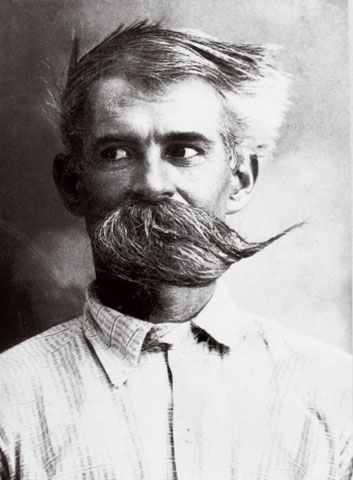Your Cart is Empty
Free and Fast Shipping | 30 Day Money Back Guarantee
Free and Fast Shipping | 30 Day Money Back Guarantee
Free and Fast Shipping | 30 Day Money Back Guarantee

3 min read
George Edgar Ohr (July 12, 1857 – April 7, 1918) was an American ceramic artist, often dubbed the "Mad Potter of Biloxi." Born in Biloxi, Mississippi, Ohr is best known for his innovative and eccentric pottery that broke away from the traditional forms and techniques of his time. Though he was not highly recognized during his lifetime, his work has since gained significant attention and appreciation, positioning him as a forerunner in the modernist art movement within the context of American ceramics.

Some of his most famous works include teapots with elongated, twisted handles, and vases with crumpled or folded forms. His creations were unlike anything of his time, making them both revolutionary and controversial.
Ohr was not commercially successful during his lifetime. He exhibited his work at various fairs, including the 1893 World's Columbian Exposition in Chicago, but gained little recognition or sales. However, he was steadfast in his belief that his work was groundbreaking and often referred to himself as the "greatest art potter on earth."

Ohr continued to create pottery until a fire destroyed his studio in 1894. After the fire destroyed his studio and much of his pottery, he continued to produce work but struggled to sell it. Perhaps due to lack of commercial success or as a way to preserve his creations for future generations, Ohr packed away thousands of pieces of unsold pottery. Many of these were carefully stored in crates and buried on his property.
George Ohr had an affectionate term for his pottery creations; he called them "mud babies." When the fire consumed his workshop and much of his art, Ohr meticulously collected what remained. Even though these pieces had been damaged by fire, he didn't discard them. Instead, he lovingly referred to these scorched works as his "burned babies," preserving them as poignant reminders of both resilience and loss.
Although he rebuilt his studio after the fire, his work remained largely overlooked, and he eventually closed his pottery business in 1910. He passed away in 1918, largely forgotten.
The hidden treasure of George Ohr's pottery was brought to light in 1968 by James Carpenter, an antiques dealer. This momentous find wasn't just a handful of pieces; it was a substantial collection that Ohr had carefully buried. Unveiling this buried cache was like opening a time capsule into Ohr's creative world, offering a new generation an up-close look at his unique style and technique.

It wasn't until his work was "rediscovered" that it began to receive the attention it deserved. Today, Ohr's pieces are highly valued and collected, showcased in museums and galleries around the world. His work has inspired a new generation of ceramic artists and is often studied as an example of early American modernism in art.
In 1994, the Ohr-O'Keefe Museum of Art was established in Biloxi, Mississippi, to honor George Ohr's legacy and contribution to the world of ceramics. The museum features a vast collection of his work and aims to educate the public about his groundbreaking techniques and artistic vision.
Comments will be approved before showing up.
Tha Quality was fantastic❗❗❗
Used grease or lard bucket was carried under rear axle to periodically grease wheel hubs. Very good video.
I'm super impressed how quickly the print got to Canada and the quality is worth every penny. Thank you so much, Gordon Parks is a hero to my partner and I'm sure he will love this surprise
Received as a gift and could not be happier with the quality of the print. Shipping container ensure this arrived in perfect condition.
Love the simplicity and vintage feel of this print. Plus- prickly + beauty theme.
Wow. What an incredible photograph, and I love the story behind it as well. Seller does excellent work, and I couldn't be more pleased.
Amazing photograph and beautifully reproduced. Excellent work and shipped quickly. Thanks so much.
Beautiful photo and amazing quality!
5 stars review from Claire
Image quality and the extent to which the image was packaged securely was perfect. Could not be happier with the product.
This image along with much of Thomas Hines' work is incredibly powerful. The brutality faced by these children makes our everyday hardships seem frivolous.
5 stars review from Pjewc191
Great item. Packed well for shipping. Shipped quickly.
arrived quickly and looks great!
Classic. Framed it, and hung it up.